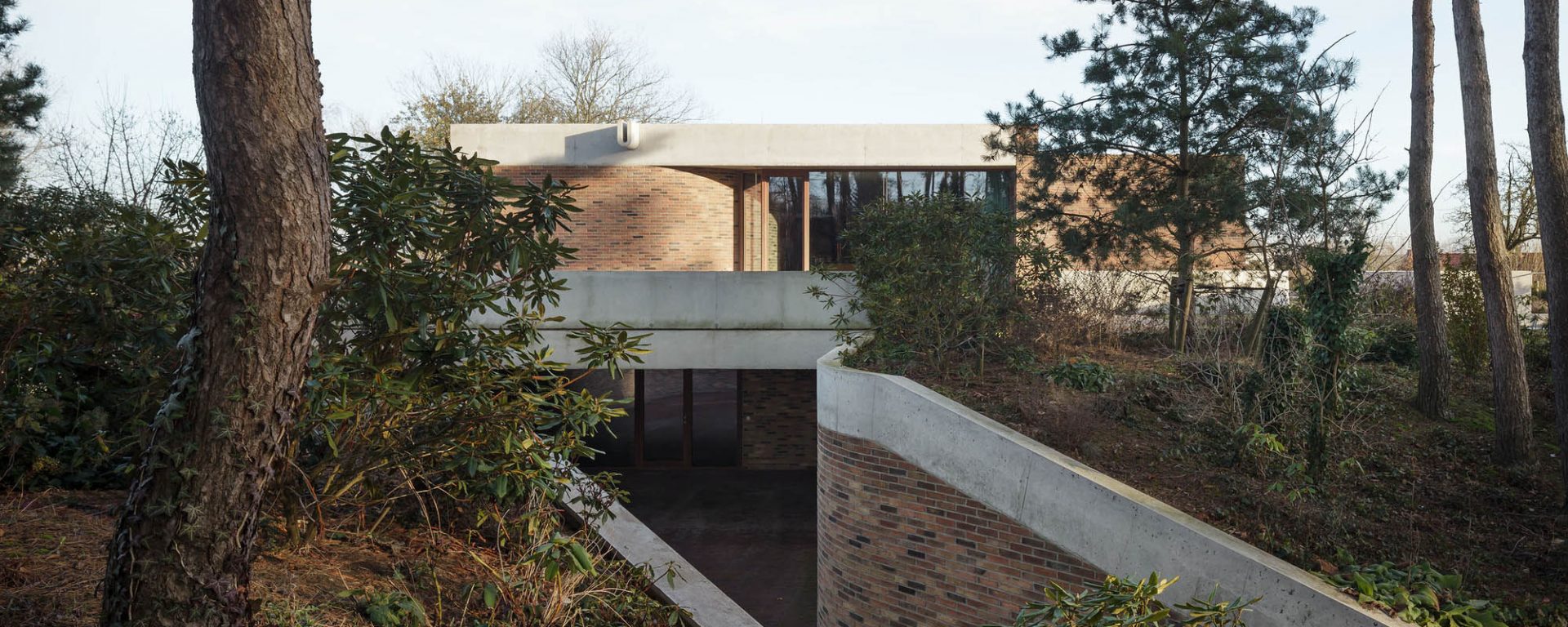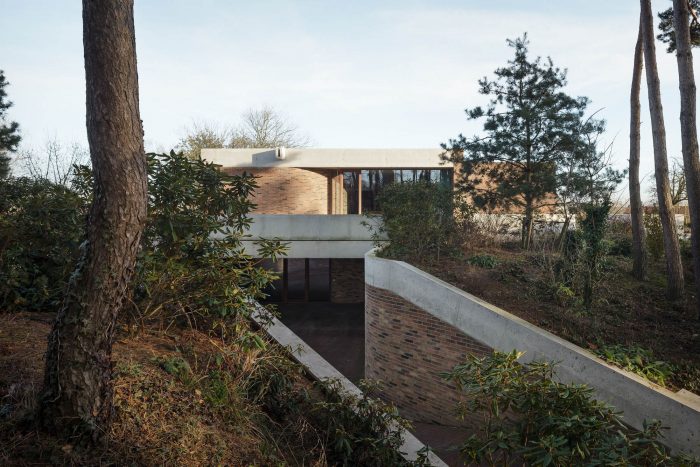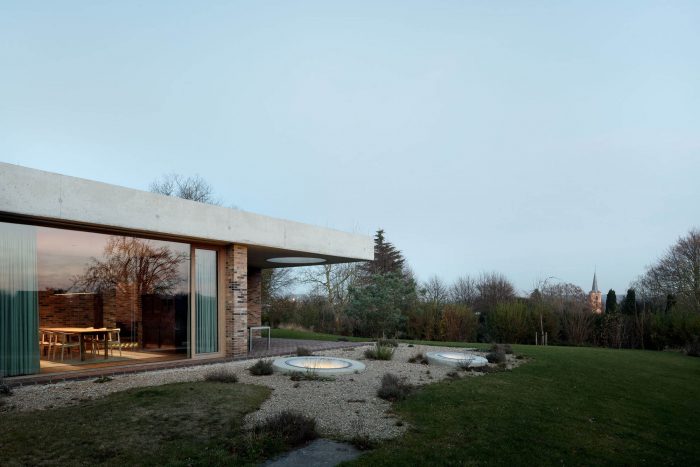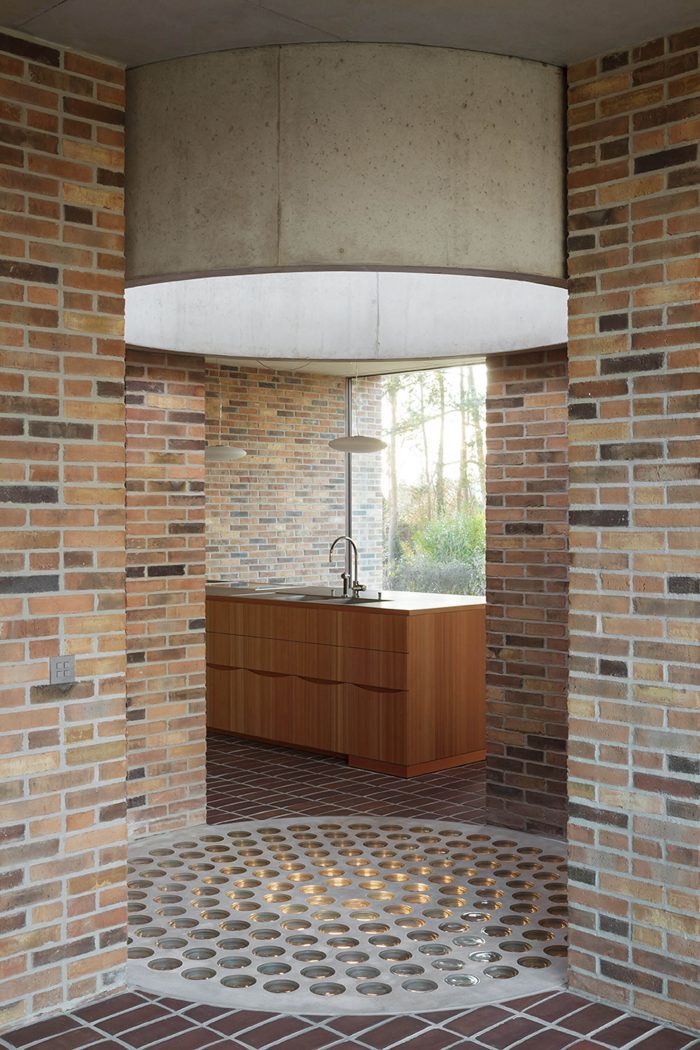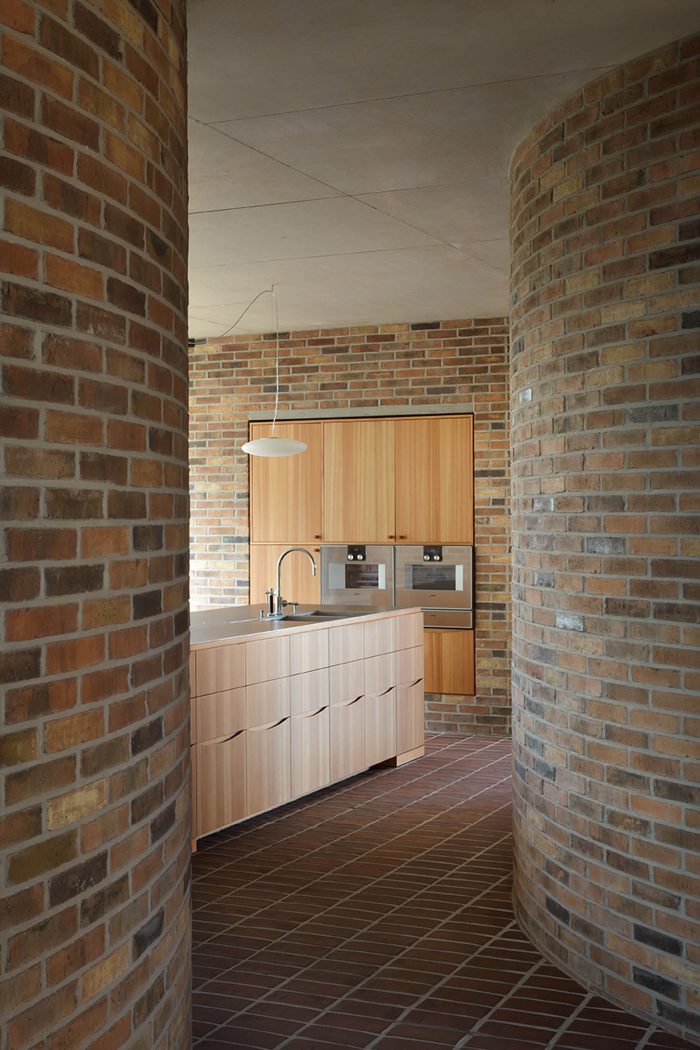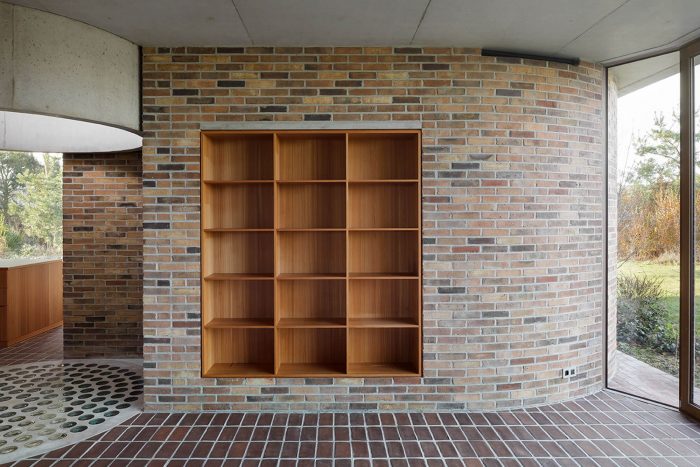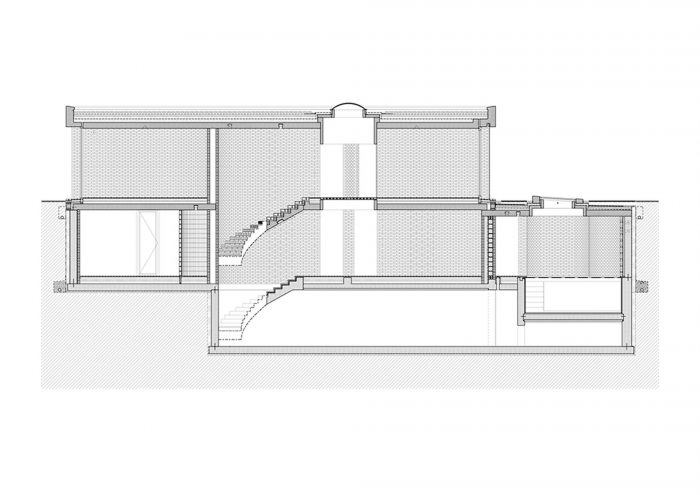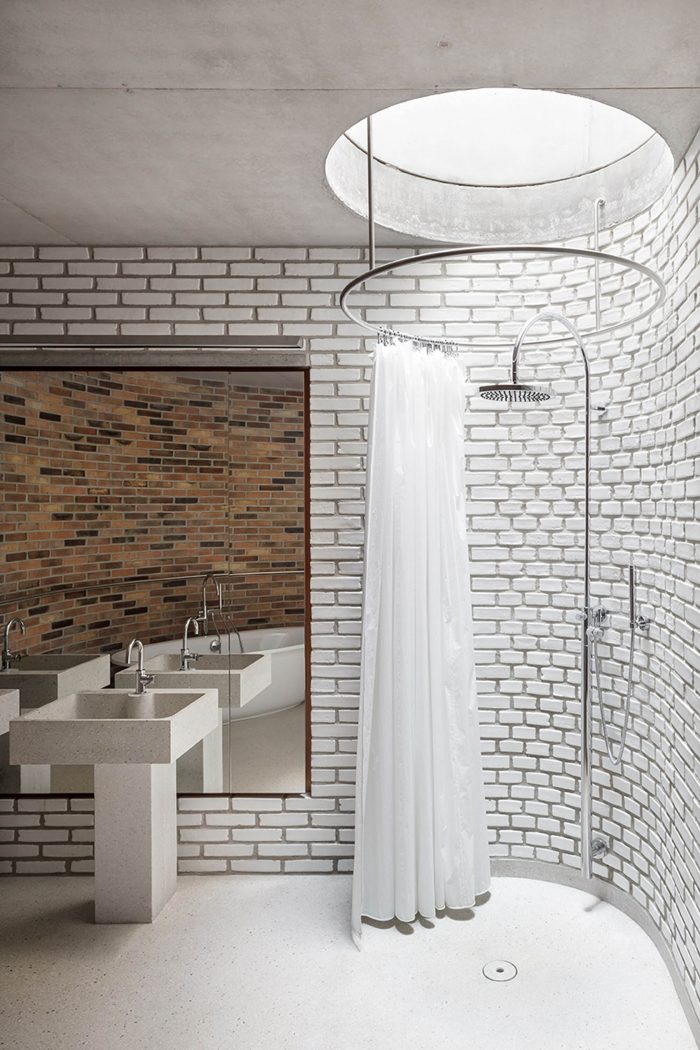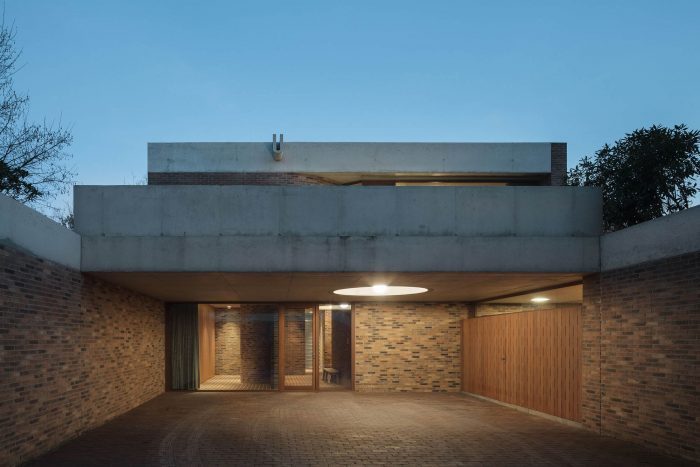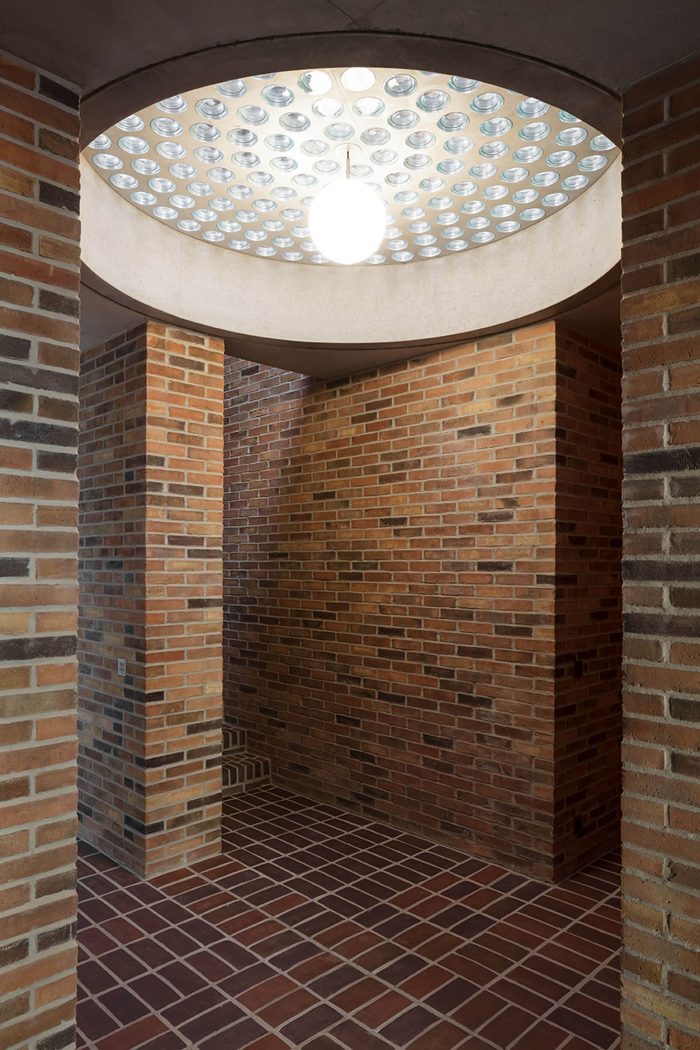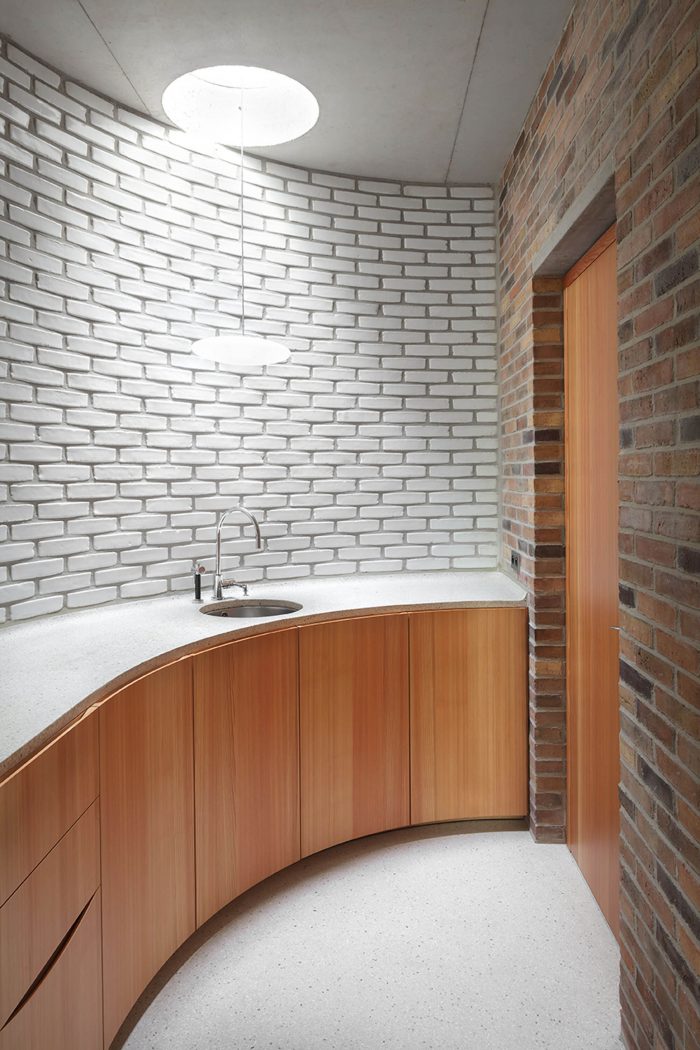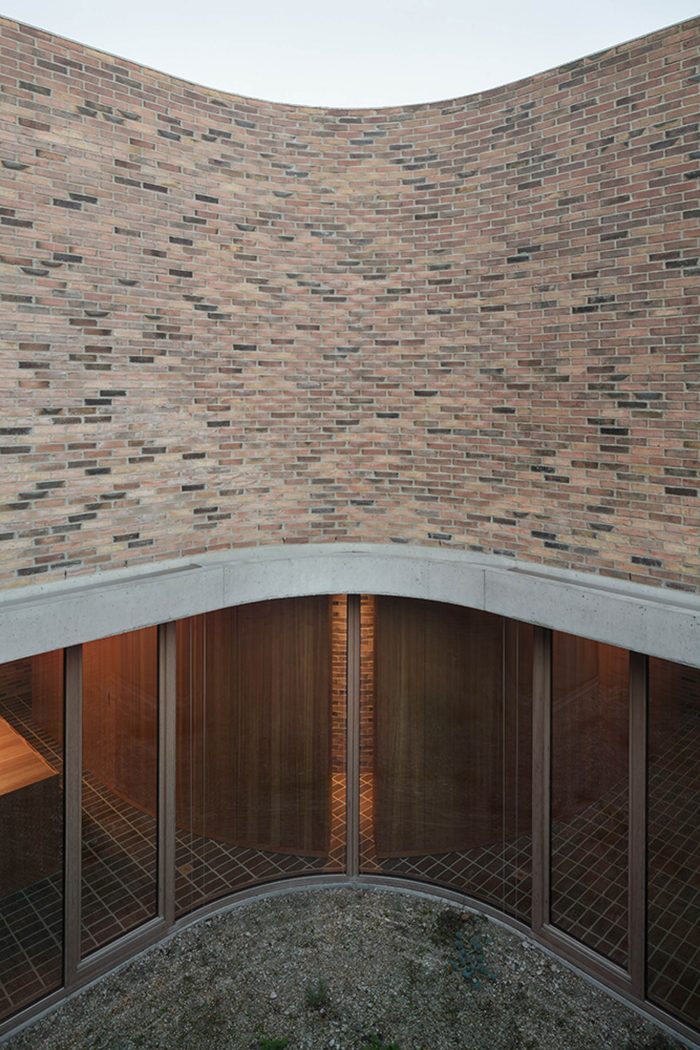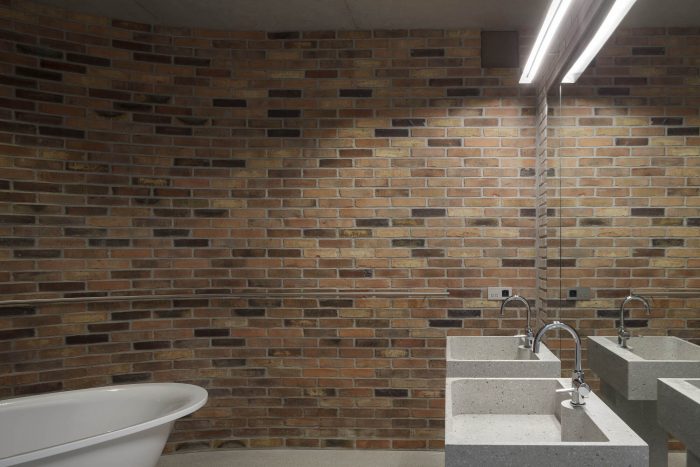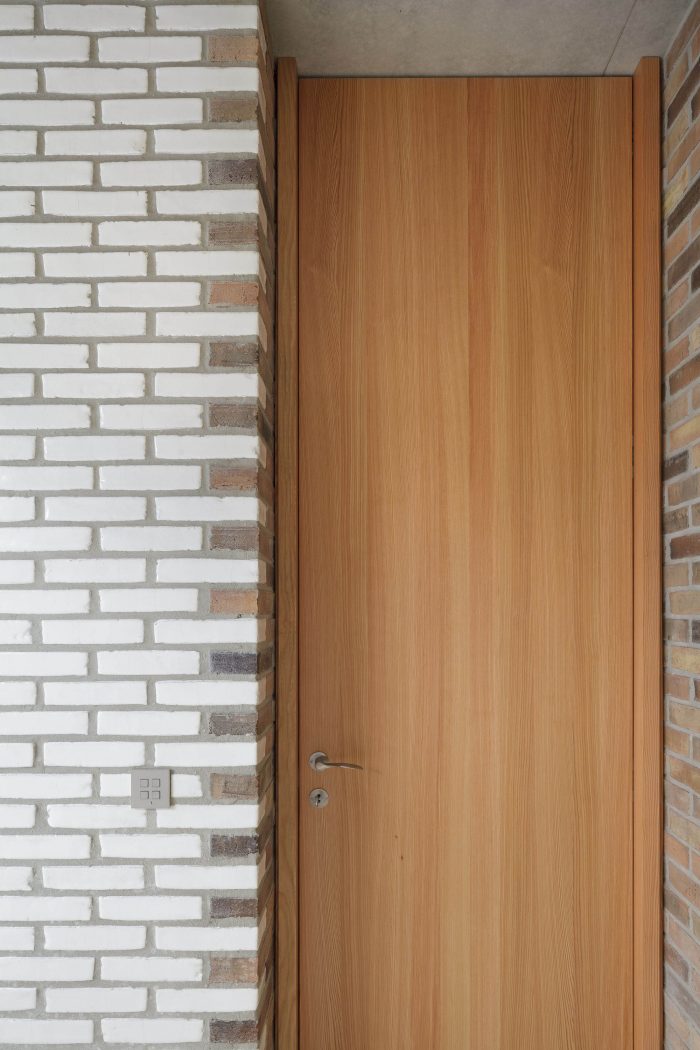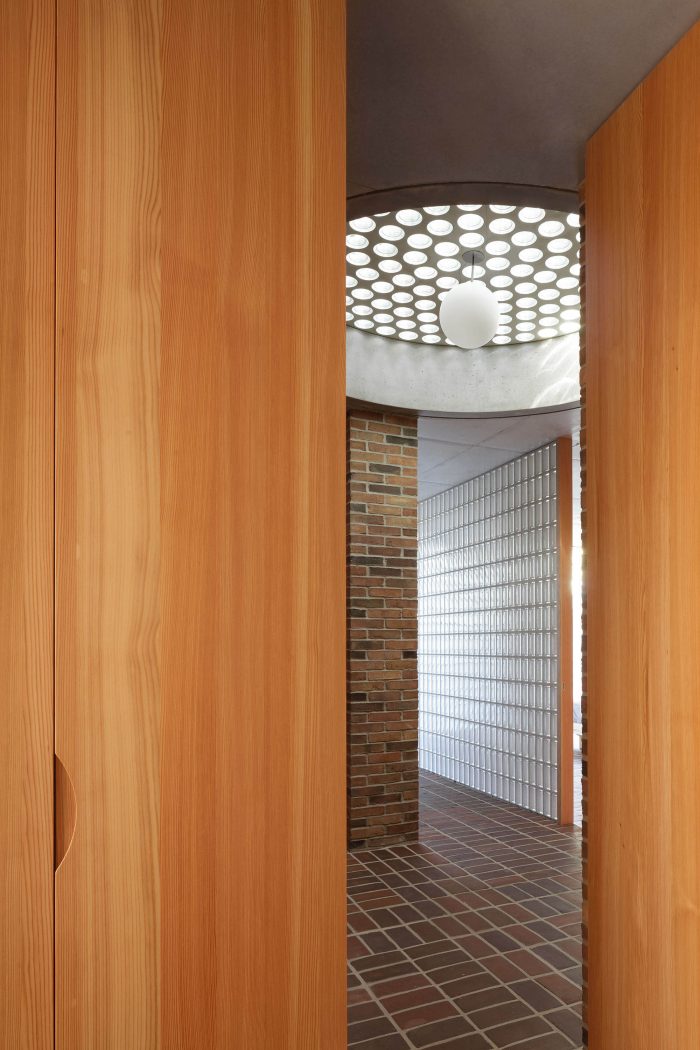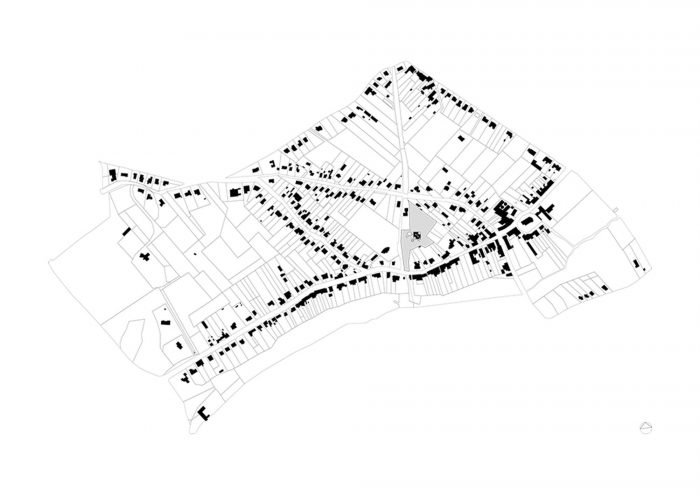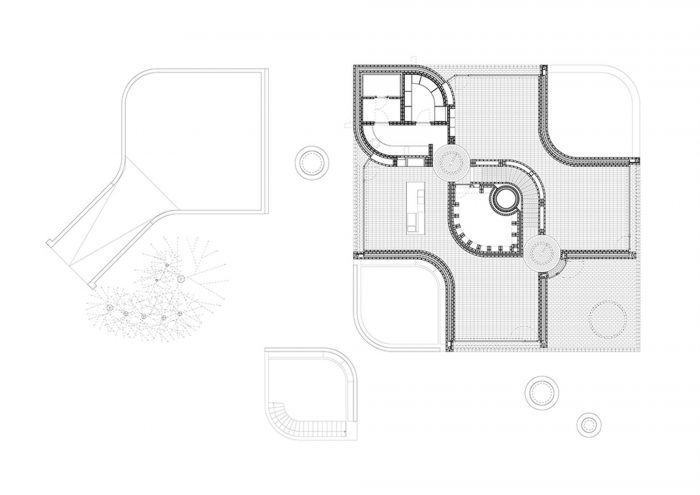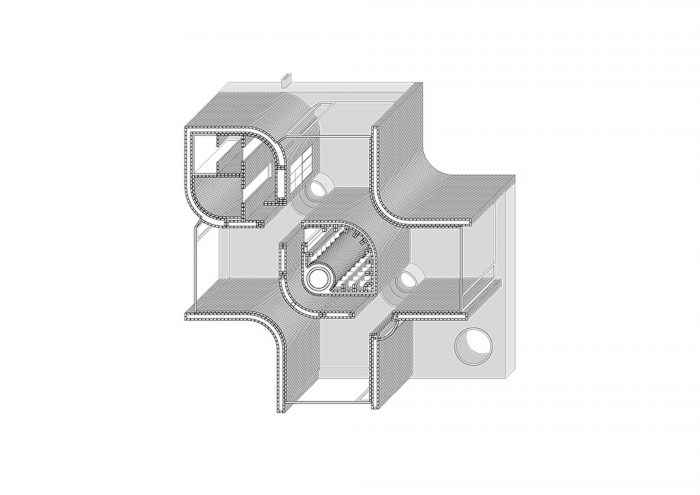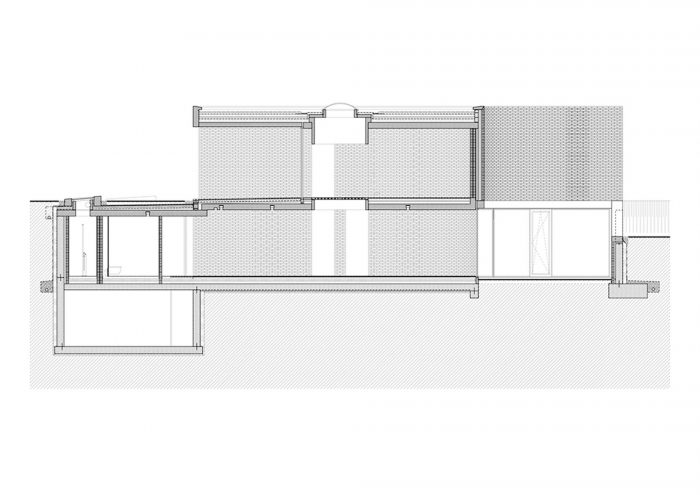该项目是一个位于农村建筑区块中间的非侵入性的单户住宅。虽然主要是在地下,但它可以看到周围的环境。主要的资产是合理的构造结构,通过精确地使用砖头作为主要的建筑材料,产生了房子的空间和有形的质量。
The project is a non-invasive single-family house in the middle of a rural building block. Although mainly underground, it looks out over the surroundings. The main asset is the logical tectonic structure, which gives birth to both the spatial and -via the precise use of brick as the main building material- the tangible qualities of the house.
房子的背景是一个(曾经)典型的弗拉芒村庄;这是一个在所分配的弗拉芒地区变得罕见的背景。沿着一条废弃的有轨电车线的树木定义了房子的主轴线。房子的定位在一个平缓的山顶上,使用户可以从居住区内捕捉到所有有趣的景色。
The context of the house is a (once) typical Flemish village; it is a context that becomes rare in the allotted Flemish region. The trees along an abandoned tramline define the main axis of the house. The positioning of the house on top of a gentle hill allows the users to capture all the interesting views from within the living quarters.
客户的简报要求建造一座独立的单户住宅–这项任务本身就在佛兰德斯的上空受到审查。一个强有力的、有意识的构造结构–而不是某种 “佛兰德常态 “的砖块–在程序和材料之间进行调解。砖块的颜色方案与周围地区的树干相匹配,混凝土屋顶和楼板,以及木制窗户定义了房子的大部分适度存在–外部和内部。
The clients’ brief asked for a free-standing single-family house -an assignment that in itself is under scrutiny inbuilt over Flanders. A strong and consciously tectonic structure -rather than some kind of ‘Flemish normality’ bricolage- mediates between the program and the materiality. Bricks in a color scheme that matches the tree stem in the surrounding area, concrete roof and floor slabs, and wooden windows define most of the modest presence of the house – outside and inside.
除了环境因素和客户的需求外,几乎没有任何限制。这就是为什么一些制约因素被刻意选择。首先,由于基本上所有方向都有有趣的景观,事实证明亭子式的房子是最合适的解决方案。为了获得对周围环境的最小影响,这个体量主要被安置在地下。接下来,房子的构造结构和它的程序之间的平衡被定义和完善,这导致了一个具有圆角的网格状计划。空间在水平和垂直方向上都相互融合。
Apart from the contextual elements and the clients’ needs, there were very few constraints. That is why some constraints were deliberately selected. First, because of the interesting views in basically all directions, a pavilion-type house proved to be the most fitting solution. To obtain a minimal impact on the surroundings, this volume was positioned mainly underground. Next, the balance between the tectonic structure of the house and its program was defined and refined, which resulted in a grid-like plan with rounded corners. Spaces merge into one another both horizontally and vertically.
庭院和战略性地放置的混凝土天窗照亮了房间,以及墙到墙的窗户。结构的逻辑性通过准确使用砖头作为主要建筑材料而得到强调和延伸。一切–内墙的长度(弧形或直线),天花板的高度……–都是根据砖石结构的比例。这使建筑具有独特的一致性。墙壁是砖或玻璃(木窗或玻璃砖),楼板是混凝土,地板是与墙壁相同的砖(大小相同,只是更薄)。砖石结构的细微变化表明墙体的哪些部分是承重的,哪些部分是空心的,含有技术装置。
Patios and strategically placed concrete skylight-domes light up the rooms, as well as wall-to-wall windows. The logic of the structure is accentuated and extended via the exact use of brick as the key building material. Everything -the length of inner walls (curved or straight), the height of ceilings …- is proportioned according to the masonry bond. It gives the building its unique consistency. The walls are either brick or glass (in wooden windows or as glass tiles), the floor slabs are in concrete, and the floors are covered in the same kind of brick as the walls (the same size, only thinner). Subtle changes in the masonry bond indicate which parts of the walls are loadbearing and which parts are hollow and contain technical installations.
建筑师:Architecten Broekx-Schiepers
年份:2015年
照片:Stijn Bollaert
制造商:Dornbracht, Bega, D-Line, Petersen Tegl, Viabizzuno, LITHOSS
首席建筑师:Jo Broekx, Marcella Schiepers
结构工程:UTIL
工程:Boydens Engineering
景观:Aldrik Hierman
国家:比利时
Architects: Architecten Broekx-Schiepers
Year: 2015
Photographs: Stijn Bollaert
Manufacturers: Dornbracht, Bega, D-Line, Petersen Tegl, Viabizzuno, LITHOSS
Lead Architects: Jo Broekx, Marcella Schiepers
Structural Engineering:UTIL
Engineering:Boydens Engineering
Landscape:Aldrik Hierman
Country:Belgium

